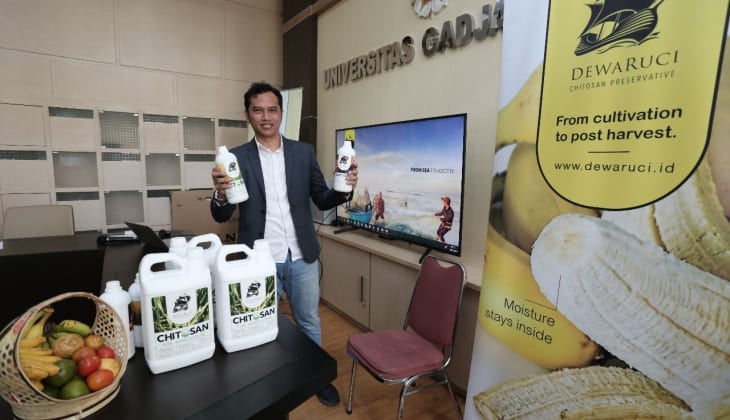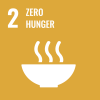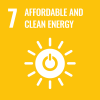
UGM researchers turned crab and shrimp shells into environmentally friendly nanochitosan to minimize pests.
At the hands of Pharmacy lecturer, the waste is also made into food preservatives. Dr.rer.nat. Ronny Martien, said the development of nanochitosan called Dewaruci comes from his concern over high use of pesticides to tackle pests in fruit and vegetable farms in Ngablak village, Kopeng, in Central Java.
“Pesticide use by farmers can reduce the pest in the farms, but this is still hazardous,” he told journalists in a press conference on Friday (11/1) at UGM.
Ronny said Indonesia’s tropical climate makes it vulnerable to pests, especially fungi and bacteria as they can grow easily in the climate that has high humidity.
Ronny was inspired to find a solution to it by making a technology that can protect the plants from the pests. Being a nanotechnology researcher, he came up with the idea to make nanochitosan to protect the plants. He utilized shrimp and crab shells waste that contain chitin compounds to turn them into liquid nanoparticles.
“The nanochitosan is sprayed as a coating that protects the plant,” he said.
The nanochitosan formula he developed was antimicrobial so it can inhibit bacteria and fungi growth. It is also non-toxic, biodegradable, and biocompatible. Chitosan is a biopolymer which is environmentally friendly. The formula can fertilize the soil as it binds together soil nutrients, thus increasing plant productivity. In addition, the nanochitosan can serve as organic food preservatives. The use of the nanochitosan will not change the taste, color, and texture, and it is natural and safe.
Ronny hoped this would minimize the use of pesticides. The formula has been applied in several areas in the country such as Kopeng, Tawangmangu, Kediri, and West Lombok by farmers and agricultural industries. Sahdi, a farmer, said he had enjoyed the benefit of the nanochitosan being applied to the rice in his farms. Rice plants can grow better with lots of leaves and are greener and denser compared to rice plants that are not given nanocitosan. He added that yields had also increased. Previously, 1 hectare of land only produced 7 tons, but with the application of nanocitosan it yielded a harvest of 13 tons.



